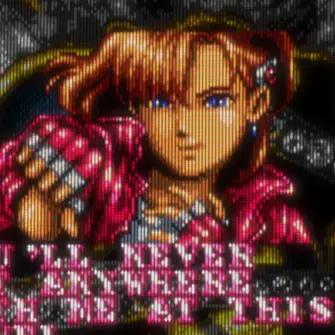When I read through the release announcements of most Linux distributions, the updates seem repetitive and uninspired—typically featuring little more than a newer kernel, a desktop environment upgrade, and the latest versions of popular applications (which have nothing to do with the distro itself). It feels like there’s a shortage of meaningful innovation, to the point that they tout updates to Firefox or LibreOffice as if they were significant contributions from the distribution itself.
It raises the question: are these distributions doing anything beyond repackaging the latest software? Are they adding any genuinely useful features or applications that differentiate them from one another? And more importantly, should they be?
For me distro’s role is to repackage things and then test them to check if they work together. Kinda like a premade sandwitch.
Yeah, I’d rather the distro be as boring as possible while the exciting stuff happens upstream.
A boring release is the best kind of release. It means that most of the effort went into stability, compatibility, and bugfixes.
If you want updates to be exciting, install Arch, but only update it once every six months. You can even run bets on which system inroduces some breaking change that forces you to reach into its guts.
I think it is a sign the Linux ecosystem is mature, boring is good in software in my opinion.
Yes, absolutely. When you look at the innovations happening to Windows recently like Copilot integration and Recall I’m glad that Linux is “boring”
wouldn’t think so. automatic upgrades is as essential feature for desktop systems, yet they are nit really here. I can’t appear at the dozens of my friends (significant amount of them elder) to upgrade their systems every few weeks or a month, or when e.g. firefox gets a critical vulnerability fix
Automatic updates are there with the right distro. Which highlights the need to look around for the right distro for the use case.
Example being Opensuse Aeon - automatic updates - doesn’t even tell you it’s happening, just pops up “your system was updated” out of nowhere
Automatic rollback - if an update broke something you would never know, at boot the system will pick the previous snapshot with no user intervention
As far as the user is concerned you just have a working system; that it is the entire goal of that distro
I’ve read about Aeon a few months ago, and it seems very nice, but I wish I would have jotted down what made me not consider it because all I remember is that there were a few
You seem to be comparing a distro release to a new game release. It’s not. A distro is not always exciting because their top priority is having a working system. This means dealing with all the boring stuff.
It feels like there’s a shortage of meaningful innovation
You can look at this in another way: Linux distros are getting mature
are these distributions doing anything beyond repackaging the latest software?
You’re saying it like packaging the latest software is a trivial task.
typically featuring little more than a newer kernel, a desktop environment upgrade, and the latest versions of popular applications
If you don’t think these are meaningful to you, I don’t know what is.
Try phoronix.com if you want a more cutting edge reporting. They’re quite opinionated, but they’re usually on point about the exciting stuff.
Linux distros are getting mature
I think this is exactly it. Back in the early days of Fedora and Ubuntu a new release often meant major bug fixes, new software, and possibly a significant qol/usability changes and performance changes. Now, its all new versions of stable software, which all behave roughly the same. Which is exactly what you want in a daily driver OS. Stability.
comparing a distro release to a new game release
- pay a LinuxGem each time you open a terminal
- Flatpak is only available as a paid DLC
- use your LinuxGems to purchase randomized LootContainers with a chance of winning a Jellyfin install
Bring on the boring! Its what lets me daily Linux as a real alternative to windows. I love that my system gets constant updates, I get to pick when they install, it goes out of its way to NOT overwrite my preferences and settings, it maintains the look and feel I set it to, and it stays stable.
Pop_OS! is about to drop a whole new desktop environment (COSMIC) made from scratch that’s not just a fork of Gnome. Canonical tried that as well a while back with Unity although it was mostly still Gnome with extra Compiz plugins.
A lot of cool stuff is also either for enterprise uses, or generally under the hood stuff. Simple packages updates can mean someone’s GPU is finally usable. Even that LibreOffice update might mean someone’s annoying bug is finally fixed.
But yes otherwise distros are mostly there to bundle up and configure the software for you. It’s really just a bunch of software, you can get the exact same experience making your own with LFS. Distros also make some choices like what are the best versions to bundle up as a release, what software and features they’re gonna use. Distros make choices for you like glibc/musl, will it use PulseAudio or PipeWire, and so on. Some distros like Bazzite are all about a specific use case (gamers), and all they do is ship all the latest tweaks and patches so all the handhelds behave correctly and just run the damn games out of the box. You can use regular Fedora but they just have it all good to go for you out of the box. That’s valuable to some people.
Sometimes not much is going on in open-source so it just makes for boring releases. Also means likely more focus on bug fixes and stability.
why have menus covering stuff up when you can just use keybinds?
deleted by creator
@cerement I don’t have menus covering anything, they are pulldown menus, with respect to keybinds, there are only so many keys on a keyboard, and usually I want to actually produce input to some application with them, don’t care for OS to get in the way here either.
Unity although it was mostly still Gnome with extra Compiz plugins
Don’t forget the added value of the Amazon ads!
No, not value for you, value for Canonical.
Unity was envisioned to become mir based eventually. So they invented a whole new display protocol when wayland was there, vastly immature though :)
Wayland was entirely unusable and mired in politics. (Still is mired in politics tbh.) So Canonical took the things they wanted, added things they needed to get it working, and called it Mir.
When Wayland finally became functional, they also made mir a Wayland compositor.
Some of the Wayland Frog protocols stuff is stuff that originated with Canonical trying to make Wayland usable before they took their ball and went home because the giants of the industry didn’t want to talk to a company of under 1000 people.
My point was that unity was innovative, not just gnome with extras.
Back then I actually liked mir (also unity) personally more than wayland.
COSMIC is built from GNOME shell, it is 100% a GNOME desktop and not from scratch.
I’m talking about the new one they made from scratch in Rust: https://system76.com/cosmic
ok, thanks for the precision. I am interested in those projects and was looking at system76’s code. This new version is in a different repository named cosmic-epoch. I’ll dig it more.
Honestly, when you say
are these distributions doing anything beyond repackaging the latest software?
— I have to wonder what you think is so trivial about keeping your system current with latest bug fixes and security updates?
I don’t need or want a distro to radically reinvent itself with every release. I had enough of that fuckery with Windows, way back when — incidentally, also a direct reason I quit that OS. And seeing “big changes” like Ubuntu deciding to functionally deprecate deb packages is… unappealing to me as well.
There are probably sexier updates going on in DEs, but (insofar as a distro isn’t wedded to one particular desktop environment) I’m fine to let them hog that glamour.
deleted by creator
As someone who recently switched to Arch (btw) I finally figured out how much work the distros were doing in the background. Between default applications and configurations, there was a lot of stuff I had to learn to do on the fly. I’m happy with my system now though, since it’s just the way I wanted it to be.
Some of them add bugs disguised as features, like Ubuntu’s snap
Funny, exactly what I mentioned in another thread https://lemmy.ml/post/21238446/14210360
Yes Snap is the bane of my existence. I actually had to create an ansible playbook for work that permanently removes the snap version of Firefox and then installs the official apt from Mozilla’s PPA. And on top I install other things my teams needs like VSCode and Chromium without using snaps. A nice repeatable process I wish I didn’t have to create but when certain clients insist on Ubuntu there is not much else to do
When the initial rush of new Linux users arrived, experienced users had been trying to explain the same point for years: there are options like NixOS or CachyOS that offer unique experiences, optimizations, custom software or unique workflows, while other distros simply rebrand. But ultimately, most of them rely on the same underlying software, regardless of the distro. Having to explain this over and over in post after post became maddening. “What is the fastest distro” Posts on daily. With enough elbow grease my ancient Debian system can be willed into the latest NVIDIA drivers or other various bleeding edge packages. With a bit of suffering, I can compile a bunch of stuff months if not years before it shows up in the standard Debian repo. Point being, it’s all Linux.
As for updates being “boring”—there’s nothing wrong with a simple update. What massive advancements do people expect these “mostly” volunteers to deliver with every update?
(Chris Titus Tech getting blowback last year marking a whole group of distros as “Pointless” when they did nothing more than a reskin or pre-install a couple in-repo packages)
@ @mfat The reason I gave up on Nvidia is they never keep their drivers up to date with the latest kernel.
I gave up on Nvidia is they never keep their drivers up to date with the latest kernel.
I honestly have no idea what you mean. I’ve been using NVIDIA cards on Linux for well over a decade. Recently the last 5 years on bleeding edge everything to get the latest benefits to gaming and the desktop. I’ve rarely run into issues with the driver. Lack of features, sure. Installing the driver, no. One of my systems has been updating year after year without a problem. Did you not use dkms? If you use dkms, it just rebuilds the driver everytime a new kernel is installed. You don’t have to do anything.
@ Download and compile the most recent kernel from kernel.org, sooner or later you’ll run into a situation where the nvidia drivers don’t support it.
Fair point. So having issues running latest mainline and RC kernels? I guess I stay away from those. The compatibility problems seem to never outweigh the benefits.
No.
Get dopamine from social media, not release notes.
Since adopting a Flatpak and containerized workflow, the choice of distribution matters a lot less to me now than it did 10 years ago.
The majority of apps that I use everyday can be run from any host. And I can install fedora, arch, debian, or whatever I want as a container, whenever I want it, without any thought to my host system.
Ideally, Flatpak’s UX will continue to improve, and upstream app devs will continue to adopt it as an official support channel, which will improve overall security and confidence of the platform. Image-based, atomic distros will be further streamlined, allowing for even more easily interchangeable host images. At that point, traditional distros will be little more than an opinionated collection of command line tools and programming environments.
Short answer: yes, and that’s a good thing.
Slightly longer answer: it’s a sign of maturity for the most popular distributions and of the platforms at large. Innovation tends to happen in the fringes. Being it free software, someone can always fork the software and add their new ideas to the mix.
This exactly. It is a good thing that these distros have matured enough that the updates are boring. I can only speak for the recent Fedora releases, but I’ve noticed quite an awesome amount of attention brought to accessibility and usability improvements that we’ve been waiting on for years. Speaking of Fedora, the next release (Fedora 41) the DNF package manager is getting a major overhaul with it moving to DNF v5 after some delay.
I don’t see updates being boring as necessarily bad since that could mean they decide to dedicate an entire major version to focusing on stability as an example. I get the sentiment and I think it’s healthy for us to engage with. I just don’t think I agree with it at the moment though.
Maybe I’m just old, but I thought a distribution is literally just a package delivery basically, just like you speculated. Making software work together nicely is actually already hard enough IMO. I don’t think anything is wrong. Valid question though
I was thinking that exact thing lol. I’m like, yes ‘distributions’ are distributing new softwares with the new kernel.
And the improvement in desktop environments does feel like a good improvement considering the user is interacting most with it.
Or maybe I’m just apathetic to these things because most things I care about my distribution are that it provides me a good package manager for external and self made programs. And everything else is just programs installed through said package manager.
@thevoidzero @gencha What I like about GNU/Linux is precisely it’s configurability, I can use whatever desktop I want, whatever greeter I want, whatever kernel I want, whatever applications I want for a given purpose, on damned near whatever hardware I want, I mean someone recently even got Linux to boot on a 4004, it took three days but it booted. I am curious how they pulled that off without an MMU and I can only imagine the amount of paging involved with it’s 12 bit address space, but point is what you can do is almost infinitely variable. Some may use a distro because it makes software work together well, but I use it as a starting point and modify it to my needs and wants. With Windows or MacOS, I got one Desktop, one provided kernel, a more limited range of supported hardware, and close to zero customization options aside from very basic things like desktop background and color schemes.
The “ran Linux on a 4004” through emulation. The 4004 was actually running a MIPS emulator ( that emulated an MMU ) and Linux run on the emulator.
@LeFantome Even running a MIPS emulator in a 12-bit (4k) address space is a real good trick.
A distro is composed of:
- an installer
- base system (bootloader, filesystems, service runner, DE, basic apps, settings)
- packet manager and packaged software
- an updater between releases
The biggest things you notice are updated packages. Many of the base-system differences aren’t even pushed to updated installations. Most of what the user sees as °the os° is the DE anyway.








